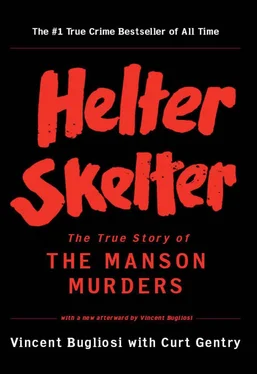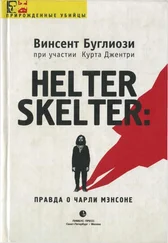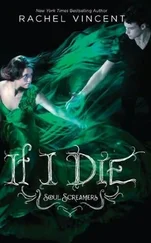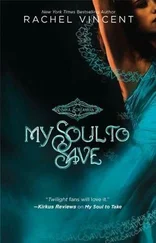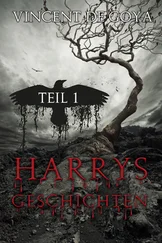Los Angeles Times delivery boy Steve Shannon heard nothing unusual when he pedaled his bike up Cielo Drive between 4:30 and 4:45 A.M. But as he put the paper in the mailbox of 10050, he did notice what looked like a telephone wire hanging over the gate. He also observed, through the gate and some distance away, that the yellow bug light on the side of the garage was still on.
Seymour Kott also noticed the light and the fallen wire when he went out to get his paper about 7:30 A.M.
About 8 A.M., Winifred Chapman got off the bus at the intersection of Santa Monica and Canyon Drive. A light-skinned black in her mid-fifties, Mrs. Chapman was the housekeeper at 10050 Cielo, and she was upset because, thanks to L.A.’s terrible bus service, she was going to be late to work. Luck seemed with her, however; just as she was about to look for a taxi, she saw a man she had once worked with, and he gave her a ride almost to the gate.
She noticed the wire immediately, and it worried her.
In front and to the left of the gate, not hidden but not conspicuous either, was a metal pole on the top of which was the gate-control mechanism. When the button was pushed, the gate swung open. There was a similar mechanism inside the grounds, both being positioned so a driver could reach the button without having to get out of the car.
Because of the wire, Mrs. Chapman thought the electricity might be off, but when she pushed the button, the gate swung open. Taking the Times out of the mailbox, she walked hurriedly onto the property, noticing an unfamiliar automobile in the driveway, a white Rambler, parked at an odd angle. But she passed it, and several other cars nearer the garage, without much thought. Overnight guests weren’t that uncommon. Someone had left the outside light on all night, and she went to the switch at the corner of the garage and turned it off.
At the end of the paved parking area was a flagstone walkway that made a half circle to the front door of the main house. She turned right before coming to the walk, however, going to the service porch entrance at the back of the residence. The key was secreted on a rafter above the door. Taking it down, she unlocked the door and went inside, walking directly to the kitchen, where she picked up the extension phone. It was dead.
Thinking that she should alert someone that the line was down, she proceeded through the dining room toward the living room. Then she stopped suddenly, her progress impeded by two large blue steamer trunks, which hadn’t been there when she had left the previous afternoon—and by what she saw.
There appeared to be blood on the trunks, on the floor next to them, and on two towels in the entryway. She couldn’t see the entire living room—a long couch cut off the area in front of the fireplace—but everywhere she could see she saw the red splashes. The front door was ajar. Looking out, she saw several pools of blood on the flagstone porch. And, farther on, on the lawn, she saw a body.
Screaming, she turned and ran through the house, leaving the same way she had come in but, on running down the driveway, changing her course so as to reach the gate-control button. In so doing, she passed on the opposite side of the white Rambler, seeing for the first time that there was a body inside the car too.
Once outside the gate, she ran down the hill to the first house, 10070, ringing the bell and pounding on the door. When the Kotts didn’t answer, she ran to the next house, 10090, banging on that door and screaming, “ Murder, death, bodies, blood! ”
Fifteen-year-old Jim Asin was outside, warming up the family car. It was Saturday and, a member of Law Enforcement Unit 800 of the Boy Scouts of America, he was waiting for his father, Ray Asin, to drive him to the West Los Angeles Division of LAPD, where he was scheduled to work on the desk. By the time he got to the porch, his parents had opened the door. While they were trying to calm the hysterical Mrs. Chapman, Jim dialed the police emergency number. Trained by the Scouts to be exact, he noted the time: 8:33.
While waiting for the police, the father and son walked as far as the gate. The white Rambler was some thirty feet inside the property, too far away to make out anything inside it, but they did see that not one but several wires were down. They appeared to have been cut.
Returning home, Jim called the police a second time and, some minutes later, a third.
There is some confusion as to exactly what happened to the calls. The official police report only states, “At 0914 hours, West Lost Angeles Units 8L5 and 8L62 were given a radio call, ‘Code 2, possible homicide, 10050 Cielo Drive.’”
The units were one-man patrol cars. Officer Jerry Joe DeRosa, driving 8L5, arrived first, light flashing and siren blaring. [1] The confusion extends to the arrival times of the units. Officer DeRosa would later testify he arrived about 9:05 A.M., which was before he supposedly received the Code 2. Officer Whisenhunt, who came next, set the time of his arrival at between 9:15 and 9:25, while officer Burbridge, who arrived after both men, testified he was there at 8:40.
DeRosa began interviewing Mrs. Chapman, but had a difficult time of it. Not only was she still hysterical, she was vague as to what she had seen—“blood, bodies everyplace”—and it was hard to get the names and relationships straight. Polanski. Altobelli. Frykowski.
Ray Asin, who knew the residents of 10050 Cielo, stepped in. The house was owned by Rudi Altobelli. He was in Europe, but had hired a caretaker, a young man named William Garretson, to look after the place. Garretson lived in the guest house to the back of the property. Altobelli had rented the main residence to Roman Polanksi, the movie director, and his wife. The Polanskis had gone to Europe, however, in March, and while they were away, two of their friends, Abigail Folger and Voytek Frykowski, had moved in. Mrs. Polanski had returned less than a month ago, and Frykowski and Folger were staying on with her until her husband returned. Mrs. Polanski was a movie actress. Her name was Sharon Tate.
Questioned by DeRosa, Mrs. Chapman was unable to say which, if any, of these people were the two bodies she had seen. To the names she added still another, that of Jay Sebring, a noted men’s hair stylist and a friend of Mrs. Polanski’s. She mentioned him because she remembered seeing his black Porsche with the other automobiles parked next to the garage.
Getting a rifle from his squad car, DeRosa had Mrs. Chapman show him how to open the gate. Walking cautiously up the driveway to the Rambler, he looked in the open window. There was a body inside, in the driver’s seat but slumped toward the passenger side. Male, Caucasian, reddish hair, plaid shirt, blue denim pants, both shirt and pants drenched with blood. He appeared to be young, probably in his teens.
About this time Unit 8L62, driven by Officer William T. Whisenhunt, pulled up outside the gate. DeRosa walked back and told him he had a possible homicide. DeRosa also showed him how to open the gate, and the two officers proceeded up the driveway, DeRosa still carrying his rifle, Whisenhunt a shotgun. As Whisenhunt passed the Rambler, he looked in, noting that the window on the driver’s side was down and both lights and ignition were off. The pair then checked out the other automobiles and, finding them empty, searched both the garage and the room above it. Still no one.
A third officer, Robert Burbridge, caught up with them. As the three men reached the end of the parking area, they saw not one but two inert forms on the lawn. From a distance they looked like mannequins that had been dipped in red paint, then tossed haphazardly on the grass.
They seemed grotesquely out of place on the well-cared-for lawn, with its landscaped shrubbery, flowers, and trees. To the right was the residence itself, long, rambling, looking more comfortable than ostentatious, the carriage light outside the main door shining brightly. Farther on, past the south end of the house, they could see a corner of the swimming pool, shimmering blue green in the morning light. Off to the side was a rustic wishing well. To the left was a split-rail fence, intertwined with Christmas-tree lights, still on. And beyond the fence was a sweeping, panoramic view that stretched all the way from downtown Los Angeles to the beach. Out there life was still going on. Here it had stopped.
Читать дальше
